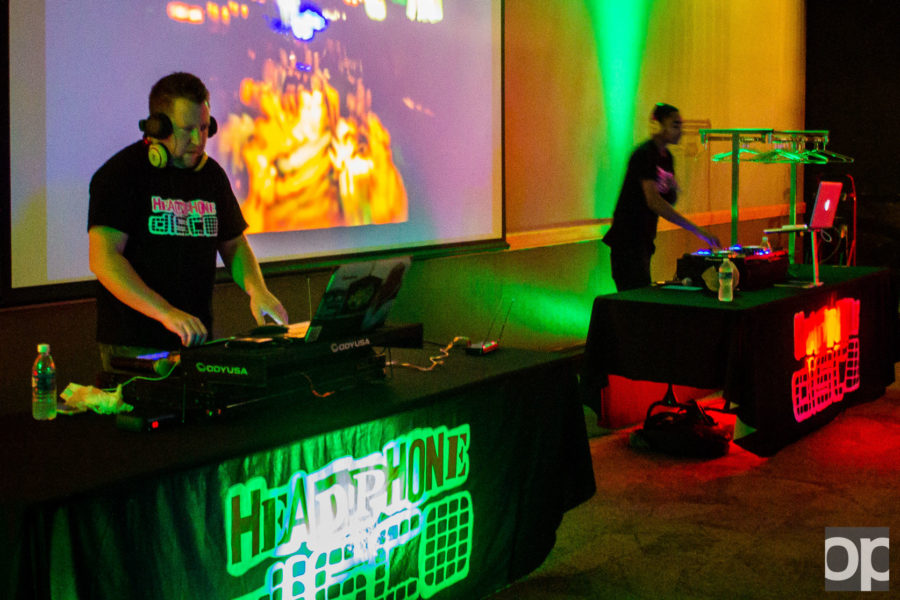Headphone Disco: an alternative take on traditional parties
Oakland students boogied down in the Gold Rooms for the annual Headphone Disco Oct. 27.
Put on by the Student Program Board, the Headphone Disco (or “silent disco” as it is sometimes called) is an event where all of the music is played over wireless headphones.
This is a twist on a normal style of party or night club atmosphere where the music is simply played through a PA system’s loud speakers.
Headphones were free for students to use as long as they signed in for them and signed out when returning them. Signing in also entered students in multiple raffles that took place throughout the evening.
Each pair of headphones had two channels to choose from with a DJ that was specifically assigned to each channel. The unique aspect of having two DJs for an event like this is that each of them could have a call and response with those listening to their station.
For instance, one DJ was surrounded in green lights and the other in red lights, so they would call out “Where my greens at?” or “Where my reds at?” over their microphones. This was then met by cheering and laughing by each group.
Nik Kim, SPB’s Mainstage Director, said that this two-DJ setup has never been done before and was really excited to see it play out.
Kim was the one who spearheaded the planning for this event. He said that, although this event has happened at OU before, the SPB wanted to make sure that the event was unique and carried a“21st century flare.
But this flare was not without nods to the past as well. Taking the disco part quite seriously, SPB decked out the Gold Rooms in total 70s style. Complete with a disco ball, afros and flashing lights, it was as if the Gold Rooms became a window through time for the night.
The night’s music was the only indicator that one was still in the 21st century, as hits from the past decade were played on both stations. From “Gangnam Style” to “The Cha-Cha Slide,” people listening to either channel had a wide variety of songs to choose from.
Especially for group dances such as these, it became evident that, to the unsuspecting viewer, these people would look quite bizarre. It just looked like a bunch of people dancing, singing and yelling with no apparent music.
Throughout the night, some did figure out the benefits of having headphones versus regular speakers. Most notably, if someone wanted to talk to someone or even just take a break from the music, it was as simple as flipping a switch.
For more information on SPB’s upcoming events, visit www.oakland.edu/spb or email [email protected] with any questions or comments.







